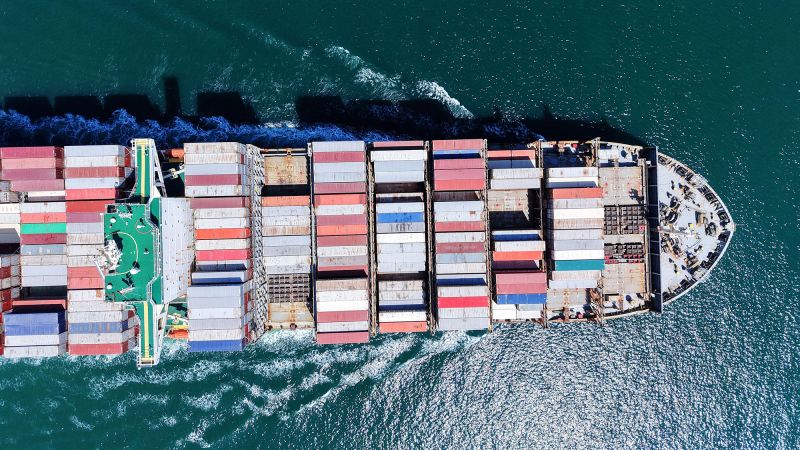The current situation concerning U.S.-China trade relations is marked by great turbulence as the last cargo ships laden with Chinese goods that are exempt from punitive tariffs make their approach to American shores. However, this is poised to change shortly, introducing a series of commercial challenges that ripple through various sectors in the U.S. economy. As tariffs implemented by President Donald Trump become effective in the coming week, the landscape for China-U.S. trade will face significant alterations.
From April 9 onward, shipments from China will be burdened with a staggering tariff rate of 145%. As these goods arrive at U.S. ports next week, it is anticipated that the number of cargo ships will decrease significantly, and they will carry reduced quantities of goods. This situation creates a dilemma for various importers who find it increasingly uneconomical to continue dealings with China, an essential trading partner for the United States, well-known as a source of a diverse array of products, ranging from clothing and footwear to vital electronics including microchips.
Businesses are presently confronting a challenging decision: to either accept heightened costs by continuing to sell imported goods from China or to withdraw these products entirely from their inventories. For consumers, this results in limited availability of products or items that are deemed too expensive. Gene Seroka, executive director of the Port of Los Angeles, shed light on this situation emphasizing the expected 35% decrease in cargo arrivals compared to the previous year due to these newly imposed tariffs.
The National Retail Federation forecasts a drastic downturn in imports during the second half of 2025, with an anticipated drop of at least 20% year over year—an even steeper decline in imports from China, which JP Morgan estimates may fall between 75% to 80%. This considerable decrease in product availability could lead to inflation, leading to increased prices for consumers as supply chains face substantial interruptions.
The impact will resonate through the job market, with predictions of a reduced working volume for dock workers and truckers, though Seroka does not foresee mass layoffs. He noted that while the local economy relies heavily on Chinese imports—accounting for 45% of business at the Port of Los Angeles—the decrease in volume could lead to diminished work opportunities across various sectors, including trucking and warehousing.
Furthermore, at the Port of Shanghai, larger cargo ships remain idly anchored, and shipping companies have opted to utilize smaller vessels to transport goods due to dwindling demand. In April, sailings from China to the U.S. decreased by 60%. Ryan Peterson, CEO of Flexport, highlighted that shipping companies are opting to cancel many scheduled sailings, illustrating the dire logistical implications stemming from these tariffs and broader economic trends.
Despite recent statistics indicating an increased volume of cargo entering other U.S. ports—including the Port of New York and New Jersey, which became the busiest in the country in March—these trends might not persist. Ports report that a notable fraction of imports are increasingly coming from countries like Vietnam and Malaysia as retailers pivot to sidestep the burdensome tariffs associated with Chinese goods.
Despite attempts to shift production away from China, establishing new supplier relationships is not a quick fix. Jonathan Gold, a vice president at the National Retail Federation, pointed out that new relationships take significant time to cultivate, requiring skilled labor and infrastructure to meet the U.S. market demands.
As retailers grapple with increasing tariffs and seek alternatives, American consumers face significant uncertainty regarding the availability and pricing of everyday goods they rely on. The core contributor to these issues—China—still plays a pivotal role in supplying a vast range of products to the U.S. market. With the clock ticking down to the implementation of these tariffs, the ramifications for both economies continue to unfold, prompting urgent discussions regarding future policies and trade agreements to ameliorate the situation.



